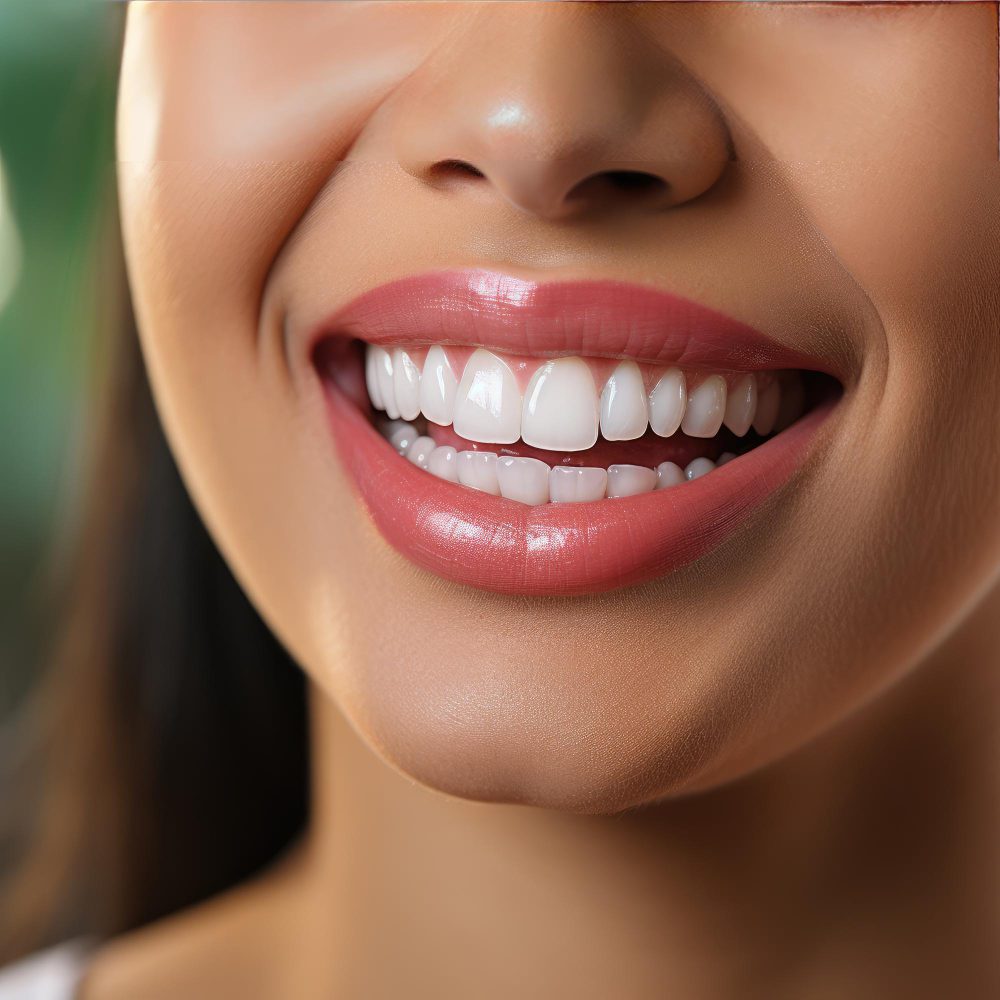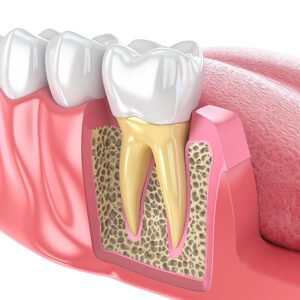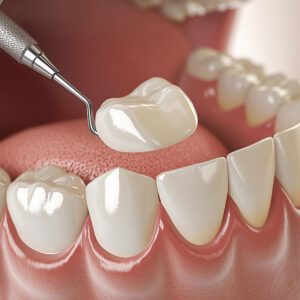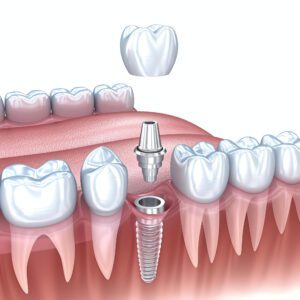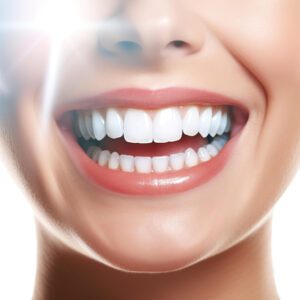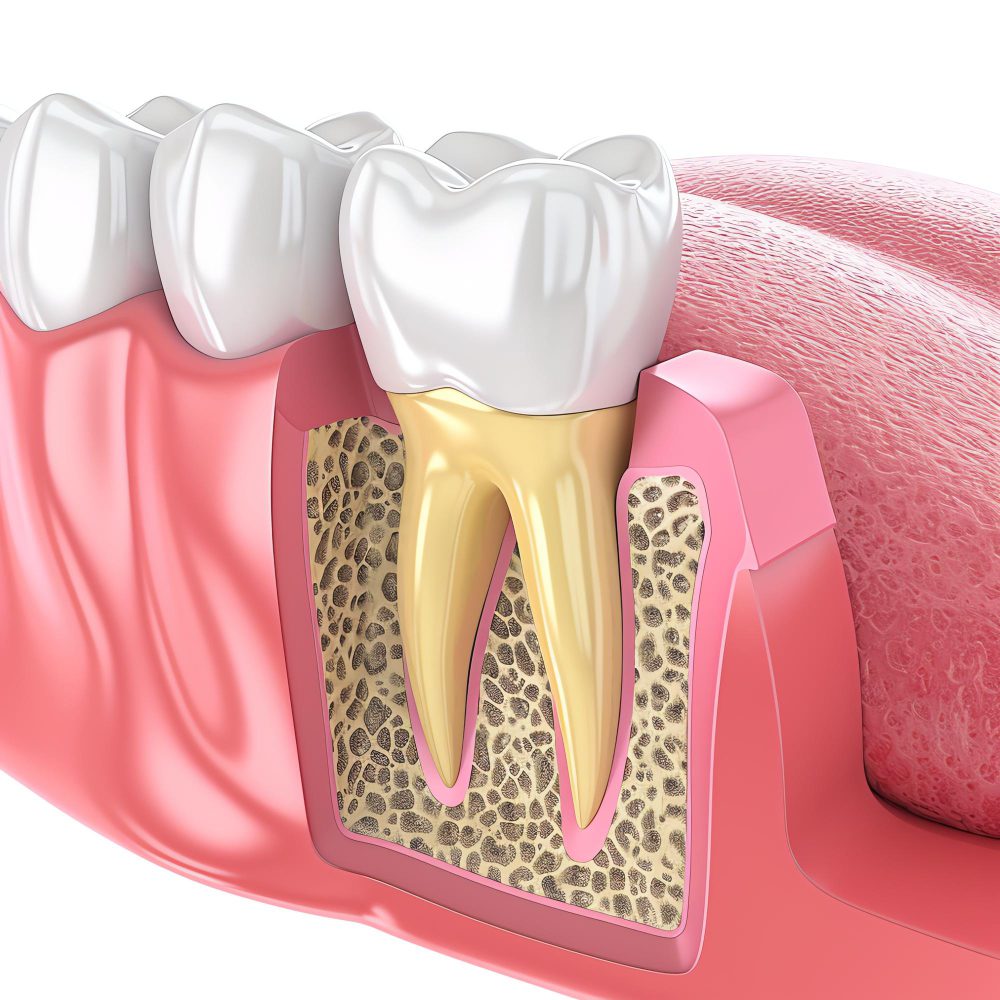Introduction to Teeth Bleaching
Teeth bleaching, commonly referred to as teeth whitening, is a cosmetic dental procedure designed to lighten the color of teeth and enhance overall dental aesthetics. This treatment is increasingly popular among individuals seeking a brighter and more radiant smile, often resulting in heightened self-esteem and confidence. Whether due to aging, lifestyle habits such as smoking, or dietary choices involving staining foods and beverages like coffee, tea, or red wine, many factors can contribute to the discoloration of teeth. As such, teeth bleaching serves as an effective solution to combat these concerns.
There are several methods available for teeth whitening, with the primary options being in-office treatments and at-home solutions. In-office bleaching typically involves the use of stronger bleaching agents applied by dental professionals, allowing for immediate and noticeable results. This method is favored for its efficiency and effectiveness, making it a preferred choice for individuals seeking quick improvements. On the other hand, at-home whitening kits, which include trays or strips pre-filled with a bleaching agent, offer convenience and flexibility, allowing users to integrate the process into their daily routines.
Regardless of the method chosen, it is crucial to recognize the importance of maintaining the color of the teeth post-treatment. After undergoing a teeth bleaching procedure, individuals may notice that the results can diminish over time due to various factors. Hence, adopting good dental hygiene practices, avoiding staining substances, and utilizing touch-up whitening products are essential steps to ensure the longevity of the bleaching effects. Understanding the intricacies of teeth bleaching not only aids in achieving desirable results but also prepares individuals for the necessary aftercare required to maintain their newly brightened smile.
Understanding Teeth Stains and Discoloration
Teeth stains and discoloration are common dental concerns that can affect individuals of all ages. These stains can be broadly categorized into two types: intrinsic and extrinsic discoloration. Understanding these categories is essential in addressing the underlying causes and maintaining the aesthetic appeal of bleached teeth.
Intrinsic stains occur within the tooth structure and are often a result of factors such as genetics, trauma, or certain medications during tooth development. For instance, exposure to tetracycline antibiotics in childhood can lead to noticeable discoloration. Additionally, conditions like fluorosis can result in white or brown spots appearing on teeth due to excessive fluoride consumption during crucial developmental stages, resulting in intrinsic discoloration that often requires specialized treatment.
On the other hand, extrinsic stains are primarily caused by external factors that affect the outer layer of the teeth, such as dietary choices and lifestyle habits. Common culprits include beverages like coffee, tea, and red wine, which contain pigments that can adhere to enamel. Furthermore, smoking or tobacco use is notorious for causing significant discoloration. The accumulation of these stains can be exacerbated over time, leading to a duller smile.
Aging also plays a crucial role in teeth discoloration. As individuals age, the enamel tends to wear down, exposing the yellowish dentin beneath. This natural process can result in a more pronounced appearance of stains and discoloration, reducing the effectiveness of whitening treatments. It is essential to recognize that while teeth bleaching may provide immediate results, the longevity of these results is highly influenced by one’s lifestyle choices and ongoing oral hygiene practices.
In conclusion, understanding the types and causes of teeth stains is vital for effective dental care and the preservation of a bright smile after undergoing whitening treatments. By being aware of potential factors that contribute to discoloration, individuals can make informed decisions to maintain the color of their teeth effectively.
Essential Tips for Maintaining Whitened Teeth
Maintaining the color of your teeth after bleaching is crucial to ensure lasting results. One of the first steps is to modify your diet to minimize exposure to staining foods and beverages. Common culprits that can lead to discoloration include coffee, tea, red wine, dark berries, and soda. It is advisable to either limit consumption of these items or rinse your mouth with water immediately afterward to reduce their staining effects. Additionally, using a straw when drinking these beverages can help minimize contact with your teeth.
Oral hygiene habits also play a significant role in preserving teeth brightness. Brushing your teeth at least twice a day with a whitening toothpaste designed to assist in stain removal is essential. Flossing daily is crucial to eliminate food particles and plaque that can cause staining. Employing mouthwash that contains no dyes can also contribute to maintaining the whiteness of your teeth. Remember to wait at least 30 minutes after consuming acidic foods or beverages before brushing, as this allows your enamel to re-harden and prevents erosion.
Regular visits to your dentist for check-ups and cleanings are equally important in the maintenance of whitened teeth. Dentists can offer professional cleanings that remove any built-up stains or plaque that regular brushing may miss. They can also provide guidance tailored to your specific dental needs and suggest any further whitening treatments if necessary. With consistent care and appropriate dietary choices, you can enjoy your bright smile for an extended period. Employing these practical strategies not only prolongs the effects of bleaching but also enhances overall oral health.
The Role of Oral Hygiene in Color Preservation
Maintaining the vibrant color of your teeth after undergoing a bleaching procedure significantly hinges on your oral hygiene routine. Proper oral care not only helps in preserving the effects of bleaching but also contributes to overall dental health, thereby enhancing the longevity of your pearly whites. One of the pivotal elements in this routine is effective brushing. It is advisable to brush your teeth at least twice a day, ideally using a soft-bristled toothbrush to avoid enamel damage. The technique should involve gentle, circular motions rather than aggressive scrubbing to ensure that the bleaching agents remain intact while minimizing wear on the enamel.
Incorporating a whitening toothpaste into your dental regimen can further bolster your efforts in maintaining whiteness. These specialized toothpastes often contain mild abrasives and other ingredients designed to help dissolve surface stains, which is particularly beneficial for those who have recently bleached their teeth. However, it is crucial to choose a whitening toothpaste that is gentle enough not to compromise the integrity of the enamel. Additionally, utilizing a fluoride toothpaste can assist in reinforcing the enamel, providing protection against cavities and maintaining a brilliant smile.
An equally important component of your oral hygiene routine is the use of mouthwashes, particularly those that are specifically formulated for whitening. Mouthwashes can help in reaching areas that brushing might miss, effectively combating plaque and tartar buildup. Choosing a mouthwash that contains enamel-safe whitening agents can assist in achieving and maintaining your desired tooth color. Moreover, regular dental check-ups should complement your at-home care, as professional cleanings can remove any deep-set stains and ensure the overall health and color of your teeth. By adhering to these recommended practices, you can significantly enhance your ability to preserve the whiter shade of your teeth after bleaching.
Home Remedies and Products for Maintaining Teeth Whiteness
Maintaining the brightness of bleached teeth is essential for achieving a long-lasting smile. Several home remedies and over-the-counter products can help sustain the whiteness of your teeth. A popular household item is baking soda, which acts as a mild abrasive and can effectively remove surface stains. To use it, create a paste by mixing baking soda with water, then gently brush your teeth with the paste once or twice a week. However, while it may offer whitening benefits, excessive use can lead to enamel erosion, so moderation is key.
Activated charcoal is another remedy that has gained popularity. Advocates of this natural ingredient claim that its porous structure can absorb toxins and stains from teeth. Users can create a paste with activated charcoal powder and water, applying it to their teeth with a toothbrush. Despite its benefits, some dental professionals caution about its abrasive nature, which may wear down enamel if used too frequently.
Whitening strips are widely accessible and can be an effective solution for maintaining teeth whiteness after professional bleaching. These strips are coated with a hydrogen peroxide-based gel that penetrates enamel for stain removal. Most brands recommend applying them for about 30 minutes daily for a period, usually between 10 to 14 days. Users should follow the instructions carefully to avoid sensitivity, which can occur with overuse or improper application.
Other products, including whitening toothpaste and mouth rinses, can also be beneficial. These items often contain mild abrasives and chemical agents designed to brighten teeth gradually. Choosing products with the American Dental Association (ADA) Seal of Acceptance can help ensure effectiveness and safety. Remember, regular dental check-ups and consultations are vital for maintaining your bright smile, as professional advice can help tailor a regimen that is safest and most effective for your individual needs.
Avoiding Common Mistakes Post-Bleaching
After undergoing a teeth bleaching procedure, maintaining the results is vital for ensuring a radiant smile. However, many individuals inadvertently make mistakes that can lead to a decline in the color of their teeth. One of the most prevalent errors is neglecting follow-up care. It is essential to adhere to the aftercare instructions provided by the dentist or whitening clinic. This may include using specific toothpaste designed for sensitive teeth, as well as stickers or strips that help prolong the effects of the bleaching treatment.
Another common pitfall is inconsistency in oral hygiene practices. Maintaining a robust oral hygiene routine post-bleaching is crucial. This includes brushing twice a day and flossing regularly to remove plaque buildup and prevent potential discoloration. Skipping these daily habits can result in enamel staining, which diminishes the brightness achieved through the procedure. Furthermore, individuals should be diligent about scheduling regular dental check-ups. Professional cleanings can help maintain the desired shade of white by eliminating surface stains that inevitably develop over time.
Diet also plays a critical role in preserving the whiteness of bleached teeth. Consuming too many staining substances such as coffee, red wine, and dark sauces can significantly compromise the results of teeth bleaching. It is advisable to avoid or limit these items, particularly within the first 48 hours after the procedure when teeth are more porous and susceptible to staining. If consuming such beverages is unavoidable, using a straw or rinsing the mouth afterward can help mitigate discoloration. By being aware of these common mistakes and taking proactive measures, individuals can enjoy their bright, white smiles for a longer period following a bleaching treatment.
The Benefits of Professional Teeth Whitening Clinics
Choosing professional teeth whitening clinics offers various advantages that significantly outweigh the use of DIY methods. Firstly, one of the primary benefits is the expertise of dental professionals. Trained in the latest techniques and equipped with advanced tools, these specialists have a comprehensive understanding of oral health, which allows them to select the most effective whitening treatment tailored for each individual. This expertise ensures a safer process, minimizing the risk of damage to the enamel or gums that can often occur with home whitening kits.
Another critical advantage is the development of customized treatment plans. A professional whitening clinic conducts thorough assessments of an individual’s dental health and existing tooth coloration before recommending a suitable treatment. Such personalized services provide more predictable and satisfying results compared to generic DIY options that may not consider unique dental conditions. This individualized approach can be particularly beneficial for those with specific concerns, such as discoloration caused by dental restoration work or previous treatments.
Moreover, professional teeth whitening clinics often use higher concentrations of whitening agents that are not available in over-the-counter products. This capability allows for quicker and more effective results, addressing deep-set stains or severe discoloration in a manner that home methods cannot achieve. Patients can expect to see noticeable improvements in their smile within a single appointment, leading to a higher satisfaction rate overall.
Lastly, the potential for lasting results cannot be overlooked. Professional treatments are designed to provide not just immediate improvements, but also prolonged effects with proper aftercare. Dental professionals often provide guidance on maintaining the brightness of teeth following treatment, further emphasizing the importance of choosing a professional clinic over DIY options. With all these factors in mind, seeking professional help for teeth whitening undeniably enhances the process, ensuring both safety and efficacy.
Overview of Dr. Abdulrahman Ozturk’s Clinic
Dr. Abdulrahman Ozturk’s clinic stands as a distinguished establishment within the realm of dental care, particularly recognized for its expertise in teeth whitening procedures. Since its inception, the clinic has earned an outstanding reputation, driven by its commitment to providing exceptional dental services tailored to the needs of each patient. Its status as one of the premier teeth whitening clinics in Türkiye is underscored by numerous positive patient testimonials highlighting not only the quality of results but also the comprehensive care received throughout the treatment process.
The clinic prides itself on utilizing state-of-the-art technology and innovative techniques in teeth whitening. Dr. Ozturk and his team are well-versed in the latest advancements in dental technology, ensuring that each whitening procedure is both effective and safe. Their approach combines artistry with science, allowing them to achieve natural-looking results that enhance the beauty of each smile. The range of services offered extends beyond cosmetic whitening, including maintenance strategies to help patients preserve their results for as long as possible.
In terms of qualifications, Dr. Abdulrahman Ozturk is a highly trained and certified dentist, possessing extensive experience in cosmetic dentistry. Alongside him is a dedicated staff composed of skilled dental hygienists and support personnel who share a commitment to patient care. Each team member contributes to a welcoming atmosphere, ensuring that patients feel comfortable and informed throughout their journey to achieving a radiant smile. The collaborative environment fosters a personalized experience, where each patient is educated on post-treatment care, enhancing their understanding of how to maintain the results of their teeth whitening.
Ultimately, the combination of expertise, cutting-edge technology, and a patient-centered approach positions Dr. Abdulrahman Ozturk’s clinic as a leader in the field of teeth whitening in Türkiye.
Conclusion and Final Thoughts
Maintaining the color of your teeth after undergoing a bleaching procedure is pivotal for achieving long-lasting results. Throughout this blog, we have highlighted key strategies that contribute to preserving the brightness of your smile. Firstly, practicing good oral hygiene, including regular brushing and flossing, is essential to prevent discoloration and plaque buildup. Additionally, making informed dietary choices and avoiding foods and beverages that are notorious for staining can significantly impact the longevity of your teeth’s whiteness.
Regular visits to a dental professional cannot be overstated. Engaging in professional follow-up sessions ensures that your oral health remains in check and allows for tailored advice based on your unique dental needs. In this regard, the expertise available at Dr. Abdulrahman Ozturk’s clinic offers a profound advantage for anyone seeking to maintain the effects of their teeth whitening procedure. His clinic not only provides cutting-edge whitening solutions but also emphasizes personalized care that addresses the long-term health and aesthetics of your smile.
Ultimately, the goal of maintaining bright, white teeth goes beyond mere aesthetics; it fosters increased self-confidence and enhances personal interactions. By adhering to the necessary follow-up care and considering professional guidance, individuals can enjoy the benefits of a radiant smile for years to come. Remember, investing in your dental care is a commitment to both health and beauty. With the support of experienced professionals, achieving and upholding your desired teeth color becomes an attainable goal. Take the first step towards a lasting bright smile at Dr. Abdulrahman Ozturk’s clinic, where dedicated care meets exceptional outcomes.

